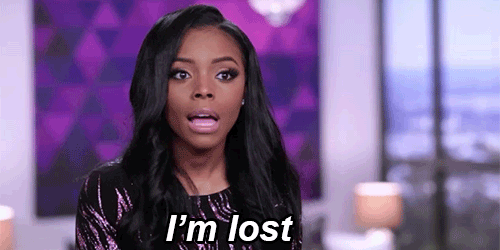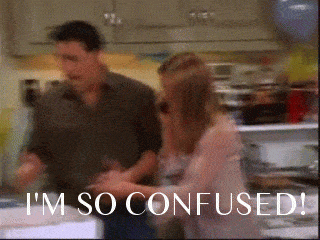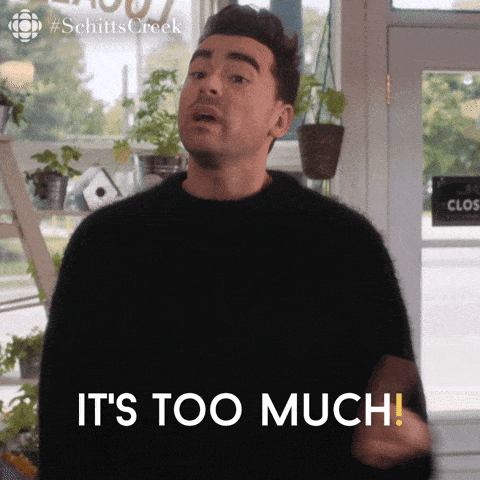Character 101: Character Motivations
- Alina Wells

- Jan 30, 2020
- 8 min read

Okay, so you've got your protagonist and your supporting cast- check. Time to jump into your story right? Wrong! You've still got one more important detail to figure out. It's time to ask yourself what motivates your characters.
Why does the sorcerer want to stop the hero from finding the ancient relic? Why is the former FBI agent convinced that something sinister is happening in his town? Why is the leader of the Boy Scouts brigade intent on stealing a rival unit's patches? Without the answer to these questions, the audience would wonder what the point of the story is, and more than likely would finish the book or film feeling like they'd been cheated, if they finished it at all. That's why it's important to make sure that your story has a point, because an unimpressed audience will not give you a second chance.
At the heart of every story is the "why" question. Now it's time to find out what the answer to that question is for your story. A character without a purpose is like a car without gas- it's not going to go anywhere. By giving them a reason for why they do the things they do, you give them the fuel they need in order to carry your narrative.
Why Are Character Motivations Important?
Defining your motivations tells the reader why they are following along in your story. It explains why your characters are making the decisions they choose to make, and it keeps their overall story consistent. No matter what happens during the course of the narrative, you should be able to trace all the decisions your characters make back to their primary motivation. Above all, it moves your story forward.
The woman therapist who is working to rehabilitate a disturbed criminal isn't surprising. It also doesn't tell us why we're reading this story. But by explaining that her motivation for doing so, is so she can gain information on how best to make him pay for the murder of her sister is a lot more interesting! Now we have a motive: revenge, and we're perfectly happy to come along for this thrilling psychological thriller.
Taking it in another direction, say the therapist's motivation is that she is in love with the criminal. Despite the fact that he has committed heinous acts of violence, she cannot help but be drawn to him due to her innate need to be submissive to a dominant personality. Now the motivation changes from that of revenge to lust and primal necessities. As a storyteller, you can see why your motivation is the core of your story and that by changing it, you can change the fabric of your story altogether.
What Are The Two Types of Motivations?
There are two different types of motivations: intrinsic, and extrinsic.
Intrinsic motivations correlate to internal thoughts and feelings. These are the motivations that come from within your character, such as a need to reconnect with their birth mother out of curiosity and a need to find a piece of themselves. It results in emotional growth and change within your character.
Extrinsic motivations are those that come from the outside world, such as a reward, deadline, fame, fortune, or the law. With this motivation, your character is longing to achieve a physical goal. You'll also notice that with this type, your character will not see as much change or fulfillment as they would with an intrinsic one, but their journey of self-discovery may lead to surprising experiences.
For example, the sorcerer trying to keep the hero from gaining access to the ancient relic is trying to achieve an extrinsic goal. The former FBI agent convinced something suspicious is happening is his town is pursuing the intrinsic goal of proving himself right.

How Do I Find What Motivates My Characters?
Determining what fuels your characters can be a little tricky. Now that you understand what motivations are and the two types, you can begin to explore what works for your characters and your story. It doesn't matter where you are in the character developing process. Whether you're just starting out, or if you're looking to refine your work-in-progress, here's how to do it:
1. Create their backstory:
If you've been following along this month, you'll already have your backstory to refer back to. If you're new, take a few moments to brainstorm why you're character is where they are today, as opposed to somewhere else. Choose from the list above which extrinsic or intrinsic motivators influence your characters. Then ask yourself these questions:
Why does my character have this intrinsic/extrinsic motivator?
What outside factors/people have influenced this desire?
Who stands in the way of your character achieving their goal?
How far will they go to accomplish it? Where do they draw the line?
Example: The leader of the Boy Scouts has been stealing the badges of a rival unit. His motivation is extrinsic because he is doing it so that his group can win a scouting competition. His overwhelming need to win is what influences his goal. The rival group stands in his way, ergo he feels he must eliminate them from the competition by dealing out a devastating emotional blow.
2. Outline their goals:
After you've identified their motivators and created a bit of backstory for them, think about their dreams and goals. This shouldn't be hard, as there should be indicators from your character's backstory that you can use while answering the next set of questions.
What are their dreams/goals?
How do they plan to accomplish their dreams?
What do they hope to gain from this achievement?
Example: The FBI agent dreams of being brought back into the folds of the FBI after being fired years earlier. He has to get past his prior bad reputation, his lack of investigative resources, and the crippling self-doubt that he feels about his own abilities.
3. Identify their limitations:
Everyone has parts of themselves that they wish they didn't. Recognizing what limits your character has to work with (whether they be mental, emotional, or physical) sets the stage for you as the writer to learn how to challenge them best. You character is going to have to face these limitations head-on in order to succeed. They're going to wish that they didn't have to get past these obstacles and at times it may seem like their flaws will keep them from their goal altogether. If you can assess why they want to get past these obstacles, their reason should be their motivation.
What limitations do they have that may stand in their way?
How are they going to get past these limitations?
What will they need in order to get past these obstacles?
How does your character feel about each one of their flaws?
Example: The sorcerer only made it to the fourth level of magic, meaning he's not very strong. This means that he has to employ other tactics in order to stall the hero, or hire other more powerful beings to help him do it. His lack of education leaves him feeling inadequate and self-conscious, which is the root source of his hatred towards, what appears to be, a highly educated and resourceful hero.
4. Keep asking yourself "why":
If you move through this exercise and still find yourself struggling for answers, keep pushing the boundary by asking yourself "why". Put yourself into your character's shoes and ask yourself what would be your motivators if you were in that position. That might help you come up with a few new ideas that you can then apply to your character.
What To Do When Motivations Aren't Working Out
Sometimes things change. What we may have mapped out during planning suddenly stops making sense midway through our draft, or drafts, as the case may be. Maybe you're the type of spontaneous writer who writes without thinking of planning at all. Writer's block can happen for all kinds of reasons, but if you think it might be motivation-related, then check out these tips below!
Problem #1: Lack of Motivation

If you've been told that your story is boring to follow or that people aren't sure where you're going with it, then you may have a lack of motivation problem. This doesn't mean that your protagonist has no purpose, it means that you've created no real obstacles for them to overcome. Things are too perfect in their world, which means that your manuscript lacks the tension it needs to keep readers enthralled.
This is a common issue for writers because oftentimes we like to take our protagonist and drop them into a situation that we find fascinating- without taking the time to figure out if they're really meant to be there. While it might be fun at first to see your protagonist in that setting, if you have no motivations to explain why they are there, then it won't work no matter how hard you try. If it doesn't make sense for the character, then it really doesn't belong.
Solution: The best way to resolve this is to first try building a stronger backstory for your character. If you can make the setting work, then by all means rock it! But, if you've gone back to the drawing board and still can't make it seem natural, then it's probably better to ditch it and come up with a setting that fits better.
Problem #2: Inconsistency

This occurs when we, or our characters, can't seem to make up their mind. If your protagonist is struggling, indecisive, conflicted, or just downright uncooperative it's probably because you as the writer are unclear about what their motivations truly are. If their motivation seems to be changing at random throughout the story, then it's likely that you need to go back and do some more planning.
If the feedback you're receiving is that your work is inconsistent, confusing, or that your character is contradicting themselves, then chances are this is why you're currently stuck.
Solution: Though it might be painstaking, start breaking apart each scene individually and look at what motivates your character in each individual situation. By doing this you'll be able to clearly see where your character is wavering in their resolve. You'll be able to pinpoint when the motivation is unclear, inconsistent, or when it's different from what you initially decided. Once you've gotten a feel for what needs to be corrected, keep in mind that the motivation you introduce at the start of the story sets the tone and behavior for the rest of your narrative. Even if your character wavers immediately after the first chapter, your audience will notice it and be quick to point it out.
Problem #3: Too Many Motivations

On the flip side, sometimes when your manuscript gets messy and your character starts falling apart it's because they have too many motivations to juggle at once. Just like real people, your protagonist can only handle so much on their plate at once. They can be inspired by different goals, but all of these need to link back to their true motivator.
Example: The ex-FBI agent can be motivated by a deadlines, his belief in the law, and his code of ethics, but ultimately his main motivator is curiosity. He wants to prove that his hunch is correct and is curious about what will occur when that goal is met. Will he find the killer? Uncover a conspiracy? He just doesn't know, and that excites him and drives him to ultimately work towards solving the mystery at hand.
Solution: Here a little organization goes a long way. Start by making a list of all the different motivations in your story, then trace them back to their common link. Whatever they can all be connected to is your primary motivator. Then take all of these other motivators and build them into other characters or obstacles that your main character must overcome.
By tweaking these details and re-defining what your motivator is, you can break your block and get back to what's really important- creating a complex, intriguing character and a story that'll make the best-sellers list.






Comments